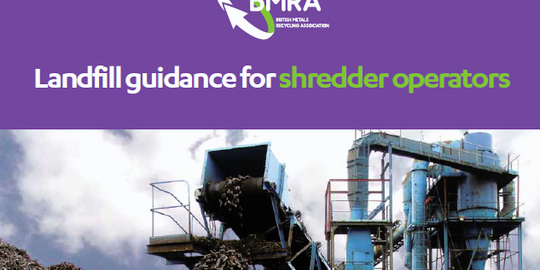Service member B P Collins LLP discusses the increase in nuisance complaints due to new housing developments
Live and let live: avoiding statutory nuisances
With growing housing demands across the UK, we are seeing new developments built closer and closer to industrial sites, leading to an increase in nuisance complaints from disgruntled buyers. What should long-standing businesses do when faced with such situations? Simon Carroll, a solicitor-advocate at B P Collins LLP, shares some top tips.
First and foremost: don’t ignore the issue – this fatal course should be avoided at all costs, particularly as knowing how to deal with an abatement notice can often save significant time and costs, and sometimes even the business itself.

Nuisance - what to know
In short, something done on one party’s land becomes an actionable nuisance when the effects extend to land belonging to another, i.e. when ‘damage’ is caused. Acts that endanger life, health and so on, or that affect the public, can also be public nuisances. These are treated similarly but can also amount to criminal offences because of their wider effect.
Parties can bring proceedings directly to recover damages or stop nuisances but, following a complaint, action is more commonly taken by local authorities under sections 79-82 of the Environmental Protection Act 1990. Under these powers, local authorities can enter a premises to investigate and enforce ‘statutory’ nuisances. These fall into various categories ranging from dust to noise and vibration, and so on.
Whilst each situation is assessed on its own facts, in deciding whether something is a nuisance, courts consider a range of issues such as: location; timing; how long and how often the nuisance occurs; and, whether the action is malicious or reasonable.
One-off events don’t count; and what is a ‘reasonable’ use of land isn’t measured against what someone hypersensitive might think. Whilst the breadth of considerations may give some comfort, it will also be clear that there is no single definition of ‘nuisance’.
Nuisance orders and abatements notices
Importantly, it is not an offence to cause a statutory nuisance. The offence is committed by failing (without reasonable excuse) to comply with a notice served by a local authority, or to comply with a nuisance order.
If a nuisance is considered to exist, local authorities will usually serve an abatement notice explaining what needs to change and by when. It should also highlight the 21-day right to appeal. In certain circumstances, individual complainants can also apply to court directly for a nuisance order. However, this is less common and is often only undertaken where a local authority fails to investigate.
Grounds of appeal can include: justification (i.e. the nuisance doesn’t exist); lack of time to complete advised work; or, that ‘best practical means’ were used to prevent the effect of any statutory nuisance occurring (i.e. a defence applies). Clearly, the extent to which appeal grounds arise will depend on the situation, and legal advice may need to be taken
Why it matters
Not dealing with nuisance orders and abatement notices can have serious financial implications. Leaving aside liability for legal costs, failing to comply or successfully appeal will likely result in a criminal offence, allowing the local authority can take several steps:
- To Prosecute the business for non-compliance – the sentence carries the risk of an unlimited fine and compensation.
- To undertake any remedial work itself and to recover all costs from the business regardless of whether it thinks it necessary.
- To apply to court for an order requiring the nuisance to stop. This commonly involves the complete cessation of business – a business critical event.

Prevention and avoidance; what can be done?
- Don’t ignore it. Take advice. Taking action early is vastly more cost effective than late.
- Engage early but strategically. If a local authority representative writes to you or wants to inspect the ‘nuisance’, take advice. Time and money can be saved if they can be persuaded not to serve a notice, perhaps by your agreement to rectify a nuisance you accept, or by explaining your defence beforehand.
- Don’t simply assume planning permission means you can’t be causing a nuisance – it doesn’t and this isn’t a defence. Neither is saying another party is also responsible.
- Consider an appeal. If you are served with a notice, be aware of, and use, the 21-day appeal facility. If nothing else an appeal can buy time, and if the deadline passes it can be very difficult to avoid the consequence of having failed to comply with the underlying requirements of the notice.
If you have any questions or wish to discuss any aspect of this article please contact Simon Carroll or Jonothan Moss on [email protected] or [email protected].



